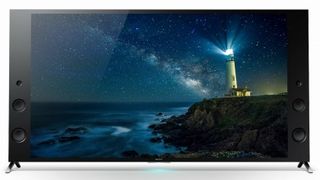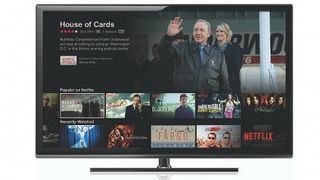Are Ultra HD Blu-rays dead on arrival?
Does anyone give a 4K about discs anymore?

Perhaps the BDA is hoping the extras it plans to include, over and above the 3840x2160 resolution, will attract home cinema aficionados.
HDR and High Frame Rate (HFR) content will both be handled by the new format, though crucially only if the film studios include it and compatible TVs become popular.
There's no guarantee about either; Deep Colour has been around for years and rarely been used.
"The technical capabilities of Blu-ray Disc, in particular its significant storage capacity and high data transfer rates, will enable the delivery of an unparalleled, consistent and repeatable UHD experience," says Victor Matsuda, chair of the BDA's Promotions Committee.
But it could be a less trumped feature of Ultra HD Blu-ray – and another brain-child of Matsuda's – that might just prove its saving grace.

Digital bridge
Details are scant, but the BDA did tell TechRadar that Ultra HD Blu-ray could include a 'digital bridge' which will allow people to view content across a range of in-home and mobile devices.
"Ultra HD Blu-ray may also include a digital bridge option to enable consumers to move their owned content from the disc to other devices such as a media server, mobile device, SD card etc. so they can enjoy their content throughout the home and on the go," said the BDA spokesperson.
Get daily insight, inspiration and deals in your inbox
Get the hottest deals available in your inbox plus news, reviews, opinion, analysis and more from the TechRadar team.
That sounds remarkably like SeeQVault, a concept Matsuda – also chief communications officer at SeeQVault's licensing company NSM – has briefed journalists on before.
Supported by Panasonic, Samsung, Sony and Toshiba, SeeQVault promises ubiquitous HD on virtually any device, with time-shifting and transfer between devices possible via SD cards and USB sticks – all armed, naturally, with the latest Digital Rights Management (DRM) software.
The tech checks that each file has a trusted ID tag by consulting a remote server before allowing playback on a new device.
Whether SeeQVault is the basis of the digital bridge will become clear, but it's worth remembering bandwidth and data caps remain a problem for most of the world, and will do for many for years yet.
Besides, the chance to swap movies between devices instantly and without the need for WiFi is genuinely compelling for all kinds of users, particularly travellers and commuters.
"It opens new possibilities for users interested in viewing HD content on any screen – from four inches to 4K," Matsuda told TechRadar back in 2013. "Moreover, it is a critical element in completing the 'digital bridge' between current devices, 4K playback devices, Ultra HD TVs and the exploding mobile market".
From a global perspective on broadband speeds, does Ultra HD have an inherent problem that only a physical format can solve? If all smartphones are soon going to have 4K screens, it might do.
It's also worth bearing in mind not all format features gain traction; does anyone even remember the whizzy online 'extras' feature called BD-Live?

House of Cards in 4K...and then what?
The 4K revolution is, for now, limited to a couple of genres. It's either streamed from Netflix or being uploaded to the internet from GoPro cameras.
The choice is thus limited to a few TV shows and some bloke in a jetpack flying over Dubai. Such content is rarely watched twice.
The missing link is live Ultra HD TV channels – and particularly live sport – but it's hard to see how the Netflix model won't become the de facto way of providing Ultra HD TV owners with something to watch.
"The value proposition of discs, where you could buy it and watch it immediately, is vanishing," said Gray. "Regardless of what happens with Ultra HD Blu-ray, the retail channels are drying-up."
He's right, but consider this: when was the last time you watched a movie – any movie – on Netflix?
Netflix has the DVD boxset market wrapped-up, for sure, but movies? Armed with a 'digital bridge' and a library of recent movies to buy online, perhaps Ultra HD Blu-ray does have a place, after all.
Jamie is a freelance tech, travel and space journalist based in the UK. He’s been writing regularly for Techradar since it was launched in 2008 and also writes regularly for Forbes, The Telegraph, the South China Morning Post, Sky & Telescope and the Sky At Night magazine as well as other Future titles T3, Digital Camera World, All About Space and Space.com. He also edits two of his own websites, TravGear.com and WhenIsTheNextEclipse.com that reflect his obsession with travel gear and solar eclipse travel. He is the author of A Stargazing Program For Beginners (Springer, 2015),
Most Popular



